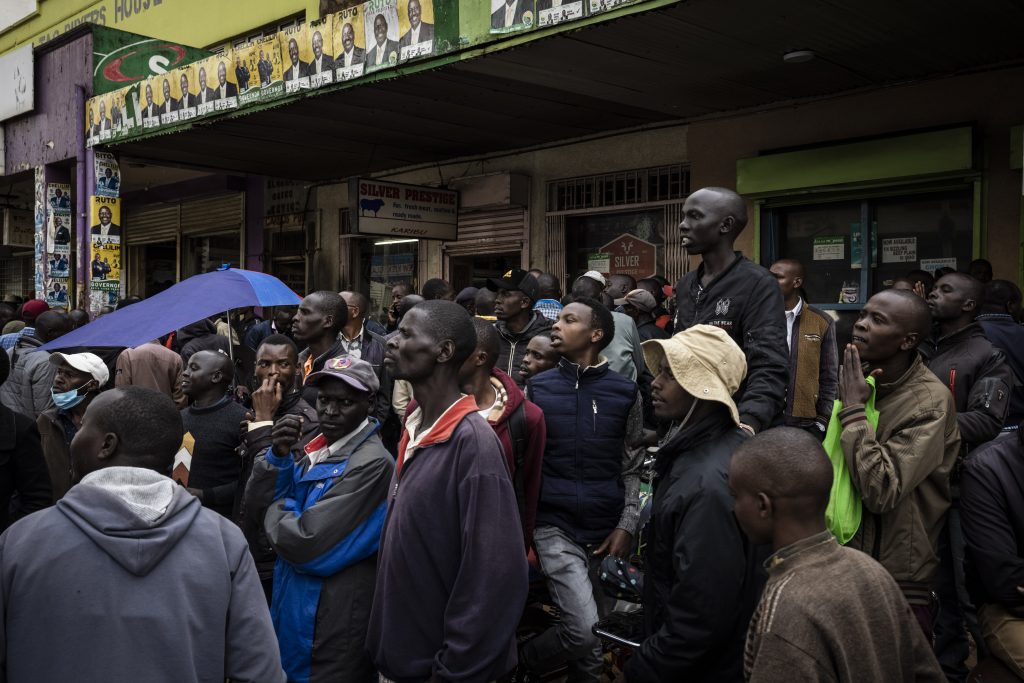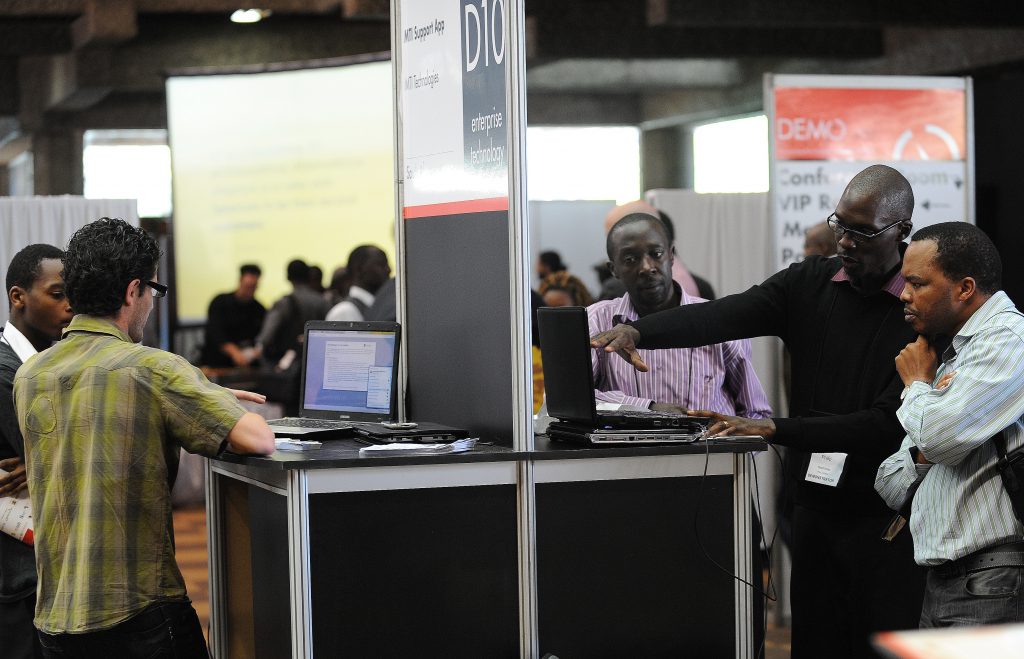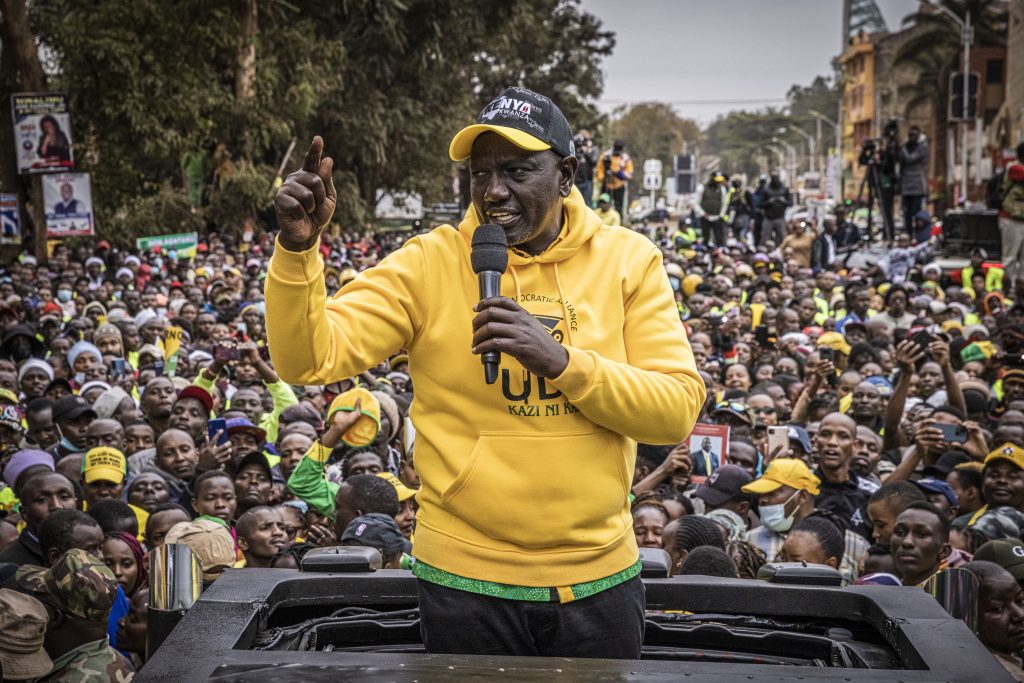Since independence in 1963, Kenyan politics has always been dominated by tribal kingpins across a chessboard composed of largely divided voters. In the last two years however, one man has been on a mission to alter this narrative, emerging successful in his quest.
It is no secret that William Samoei Ruto was bound to vie for the presidency in 2022, once President Uhuru Kenyatta – his outgoing boss – was sworn into office in April 2013. What has surprised many is the bandwagon that Ruto took during the campaigns, one that has propelled him to the presidency seat.
Clad in the bright yellow of his United Democratic Alliance (UDA) party, whose symbol is the humble wheelbarrow, Ruto has been reaching out to those suffering most from the COVID-19-induced cost of living crisis that has been aggravated by growing debt and runaway corruption in Kenyatta’s government. Unlike his political predecessors, Ruto shied away from the “tyranny of numbers” game and chose to focus his political bid on a unique brand of economic policies.
“I think what Ruto did that was clever is it’s the perfect time, he picked the perfect storm,” Kenyan political analyst Nerima Wako-Ojiwa told AFP.

On Monday evening, that strategy proved successful. The Independent Electoral and Boundaries Commission (IEBC) declared William Ruto as the winner of the August 9th presidential poll, garnering 7,176,141 votes (50.49%). The 55-year-old beat veteran opposition leader Raila Odinga, who was backed by significant government support while making his fifth stab at the post.
Ruto defines himself as a hustler. Someone who worked himself up from a selling chicken in the capital’s poor neighborhoods to the second highest office in the land – the Deputy President. While being a tycoon himself thanks to his vast investments across the real estate, agriculture, and the hotel industry, he has played the underdog card against rivals Uhuru Kenyatta and Raila Odinga, sons of Kenya’s founding fathers former President Jomo Kenyatta and Vice President Oginga Odinga. To him, they are dynasties that have benefited from the names and wealth of their parents.
“I sold chicken at a railway crossing near my home as a child. I paid school fees for my siblings,” he once said. “God has been kind to me and through hard work and determination, I have something.”
Hustler is a term that has become synonymous among the country’s youths. In Kenyan slang, it refers to a person who works out many tasks to make a living. It is also a term that the outgoing Deputy President has quickly adopted in his path to clinching the top seat. His official residence in Karen has been dubbed “the hustler’s mansion”, and himself “the chief hustler.”
The hustler economic model
Over the last decade, Kenya has experienced substantial macroeconomic growth but many Kenyans are yet to feel the economic dividends. The level of inequality can be seen in Nairobi where the rich drive on the Expressway while the poor sit in long traffic jams on the congested highways below. A government report last year stated that only 19 million Kenyans are employed, out of which only 3 million (15%) are in formal jobs. This has left a large chunk of educated youth disgruntled, disillusion and waiting for a savior.
For these youths, tribal politics wasn’t going to work. Disappointed by Kenyatta’s government, they quickly became absorbed in the hustler movement becoming foot soldiers in the battle to redefine Kenya’s politics.
As a “hustler”, William Ruto preached the bottom-up economic framework, part of what he terms hustlernomics. He says it is anchored on a program that promotes investments and financial instruments that target millions who are unemployed, hustler enterprises, farmer groups, and fishermen.
Many supporters rallied around the idea, believing is the only solution to bridging the wide gap between the minority rich and majority poor. Ruto also drew comparisons with the trickle-down economics that has been practiced in Kenya for long time, urging reluctant voters to move to the bottom-up approach that had the potential to create 15 million jobs for young Kenyans.

“I will work hard to implement every aspect of what I am pledging. The bottom-up economy will work and must work, this I can assure Kenyans and I will be accountable to them,” he said.
To achieve the hustler economic model, Ruto’s team focused on six core pillars, namely: Agriculture; Micro, Small and Medium Enterprise (MSME) economy; Housing and Settlement; Healthcare; Digital Superhighway and creative economy; environment and climate change.
The President-Elect pledged that, if elected to the top office, his government will allocate Ksh.250 billion ($220M) between 2023 and 2027 to the agricultural sector, which contributes half of Kenya’s GDP. His previous experience of serving as Minister of Agriculture helped boost his popularity among farmers, who were enamored by the promise of receiving working capital, reduction of fertilizer prices and support to cooperatives.
“He is a good neighbor who teaches us how to farm. Back when he was the Minister for Agriculture he subsidised fertilizers. The price of fertilizer at the moment is at its highest ever. He is the only one who understands the issues of farmers,” says vegetable seller Mama Sasha in Kosachei, an agricultural town in Kenya’s Rift Valley.
Meanwhile, his main competitor Raila Odinga, backed by outgoing President Kenyatta and many of the country’s top business elites, pledged to give every struggling Kenyan household Ksh.6,000 ($52) every month and launch a nationwide healthcare scheme called Babacare. However, Raila could not shake off the image of dynasty.
The endorsement by President Kenyatta did not help, nor was the frequent arguments by his supporters that finally he had support of the deep state. Many of Kenyatta’s cabinet officials openly campaigned for Odinga, and the local administration acted as his chief agents, using their power and state resources to mobilize support for the opposition leader. That served to build up the narrative of “eliteness” versus the hustlernomics preached by his main rival Ruto.
Despite Hustlernomics having won Ruto the top seat, it has also attracted critique from academic experts. Prof. X.N. Iraki, an economist and a lecturer at the University of Nairobi, says the idea is noble if it seeks to provide finances for investment. However, Prof Iraki stated that there is still more to be done besides providing finances.
“It is a noble idea but there is more to economic growth other than finances. He should go further and consider the business environment in terms of factors that would hinder growth. Offering finances as well as checking whether the ideas are viable is important,” Prof Iraki told Kenyans.co.ke.
Hustlernomics captured the hearts of young entrepreneurs
When Joseph Gitile started his soap manufacturing business in 2017; he was exuberant and very optimistic that within a few months he would be Kenya’s next millionaire. In January 2018, reality dawned, and he had to painfully shut down his business after accumulating millions of shillings, not in profits – but debts and unpaid bills.
Joseph is not the only one to experience such a similar fate in Kenya. His business is one of a whopping 400,000 that were, according to the government, shut down within the same period after less than two years in operation. This is even before the socio-economic devastating effects of the coronavirus pandemic began to ripple across the country.
For youths like Joseph, they were enamored by hustlernomics. In his manifesto, William Ruto promised to set aside Ksh.50 billion ($480M) for a Hustlers Fund whose proceeds would be channeled towards supporting Medium, Small and Micro Enterprises (MSMEs). According to his party, the kitty will benefit members of savings and credit cooperatives (saccos) to provide start-up and growth capital for SMEs. The amount will be allocated annually.
“The plan is to ensure through the Hustler Fund that we commit Ksh.50 billion every year so that the mama mboga, the boda boda guy, and the fellow at the salon find credit,” stated Ruto in his campaign rallies.

While Kenya is a powerhouse on the startup scene, it is also a massive graveyard for small businesses. In June, the International Monetary Fund ranked Kenya as the second worst environment to do business.
International trade and foreign policy
The election of William Ruto as Kenya’s 5th president is set to shake up the country’s foreign policy agenda. On the East African Community, Ruto is a key ally of Uganda’s President Yoweri Museveni, and he is likely to continue the close cooperation both countries enjoy. Ruto, however, may not take a keen interest in continuing the recent mediation talks started by his predecessor Uhuru Kenyatta on ending the conflict in eastern Democratic Republic of Congo (DRC). Current DRC President Felix Tshisekedi is a close friend of his rival Raila Odinga and Kenyatta. Kenyatta was the only African president to attend his inauguration in 2019.
While William Ruto has seldom mentioned about the AFCFTA on the campaign trail, it is widely expected that he will put more efforts towards implementation of the landmark framework, in line with his hustlernomics policies. The AFCFTA has the potential of opening new markets for young Kenyan hustlers.
If there is one area where Ruto and his political lieutenants have set their targets on is China. The world’s second largest economy has been the recipient of scorn and ridicule from many Kenyans online, who view their debt-funded infrastructure projects as synonymous with the country’s economic woes. Projects like the Standard Gauge Railway (SGR) that cost Ksh.570 billion ($5.2B) have failed to make returns, and been dogged by allegations of corruption.
The President-Elect has repeatedly criticized Kenya’s borrowing from China on pushing the country’s high public debt, which stands at roughly 75% of total GDP. Ruto has promised to deport Chinese nationals, and publish in the public domain all government contracts involving Chinese companies since 2014.


